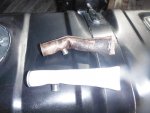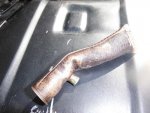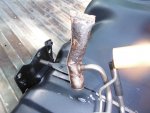Theory on diesels is so simple. Put clean fuel to the IP, let the IP send the pressurized fuel to the injectors and let any left over fuel go back to the tank. Have a clean air filter and unrestricted air access. Then spin it fast enough to make fire and let it run.
It doesn't read like you have any mechanical issues with the engine. You obviously have good air access to be able to get to that speed. That just leaves fuel.
My first thought when reading your post was IP. Many of us have had issues with the engine running great under load or acceleration. Then let off and the power doesn't come back on until things slow down a lot. Like coasting with your foot flat on the floor from 60 down to 40. Then full power again until you let off. I would guess that if you let the truck warm up, floor it from idle and let go of the pedal as soon as the rpm's start going up. That the engine will die or stumble real bad for a bit. That is IP issues.
Try the test above, just don't let it rev up very much. You are testing the snap part, not the rpm part. Pull your IP return check valve and see if it has little black chunks in there. Actually, anything in there is bad besides the clear glass spring loaded ball. I would suggest pulling the IP cover and seing if any junk is in the resevoir. There probably is something based on what you describe.
If all that checks out ok. Start with the normal basics. Good fuel pick up in the tank, solid non porous fuel line to the lift pump, non leaking lift pump, good flexible hose to the lift pump, non leaking filter and good lines to and from the filter. Then un restricted return lines all the way to the tank. If that checks out, you are full circle and back to the IP.
You wrote that it was a new IP. Was it really new or un used sitting on a shelf for 20 years, rebuilt and sitting for a few years, or truly built, put in your hand and installed that day? They have a shelf life. I have been told by Stanadyne people that putting one on the shelf as a spare is useless after a few months. They need to be sealed up with fuel in them and still are only considered good for 5-8 years.





